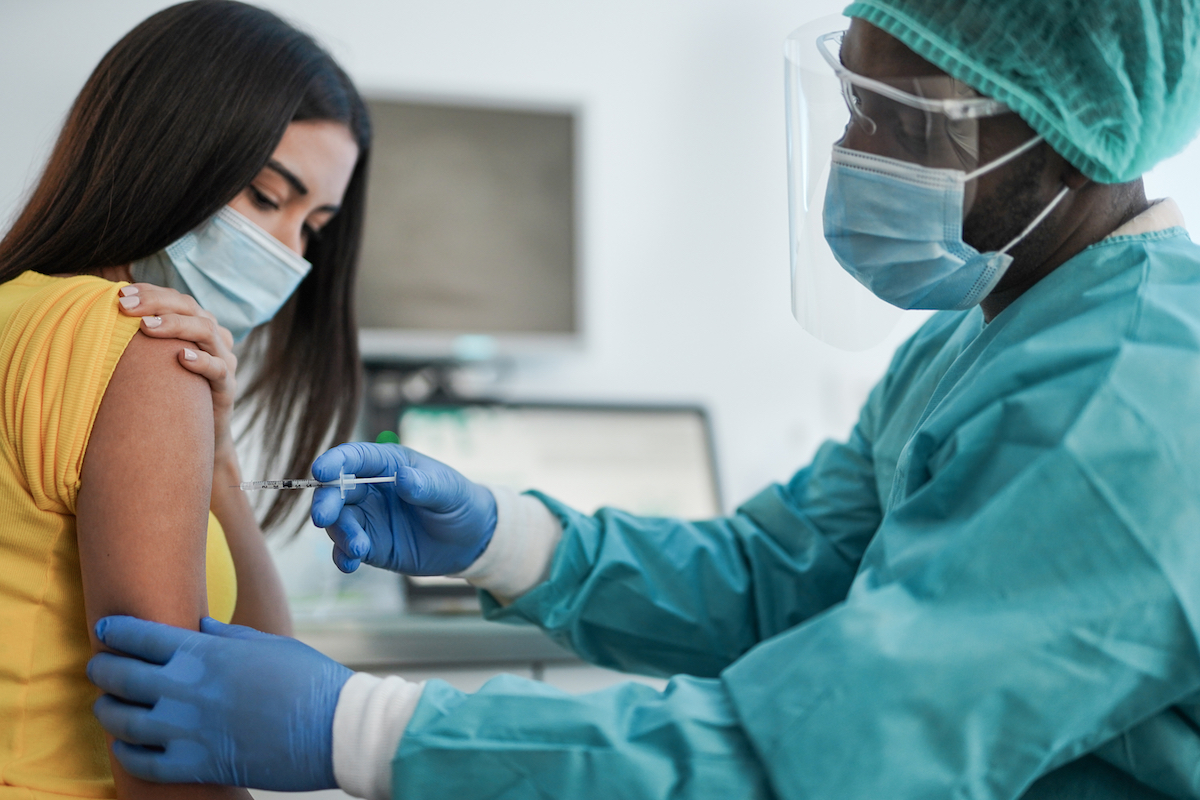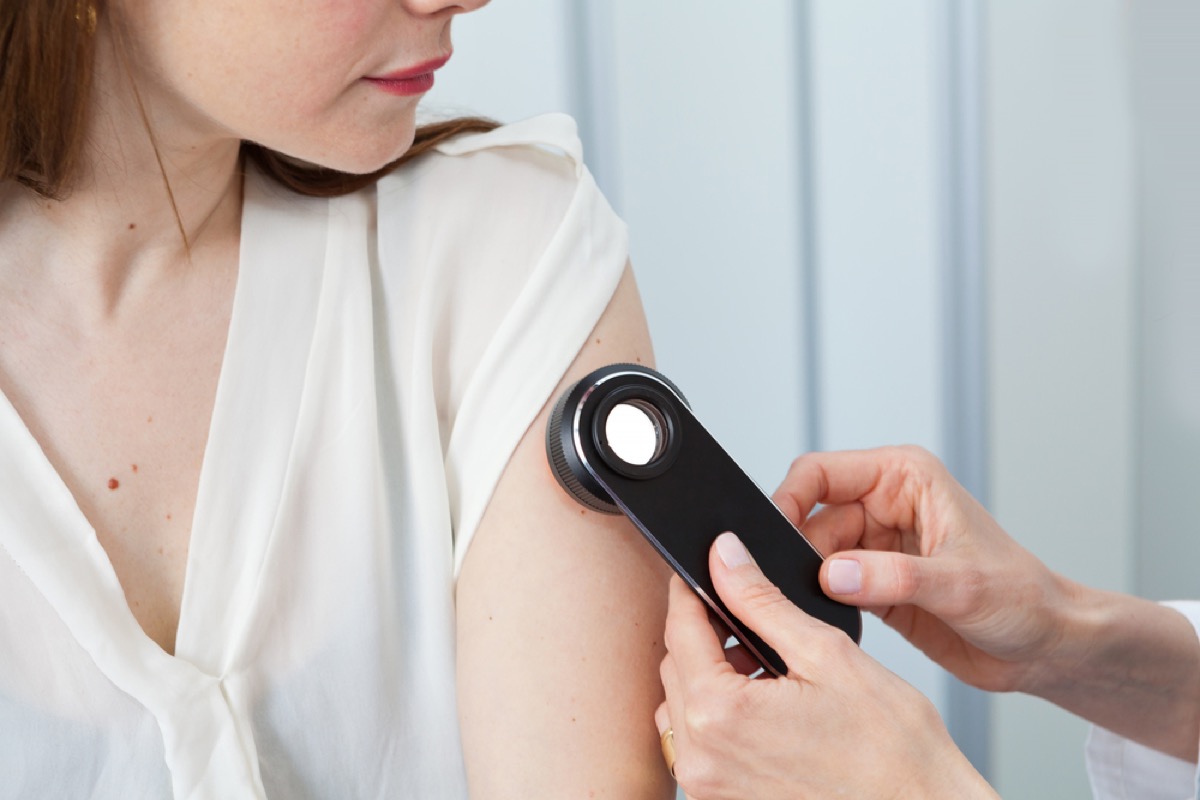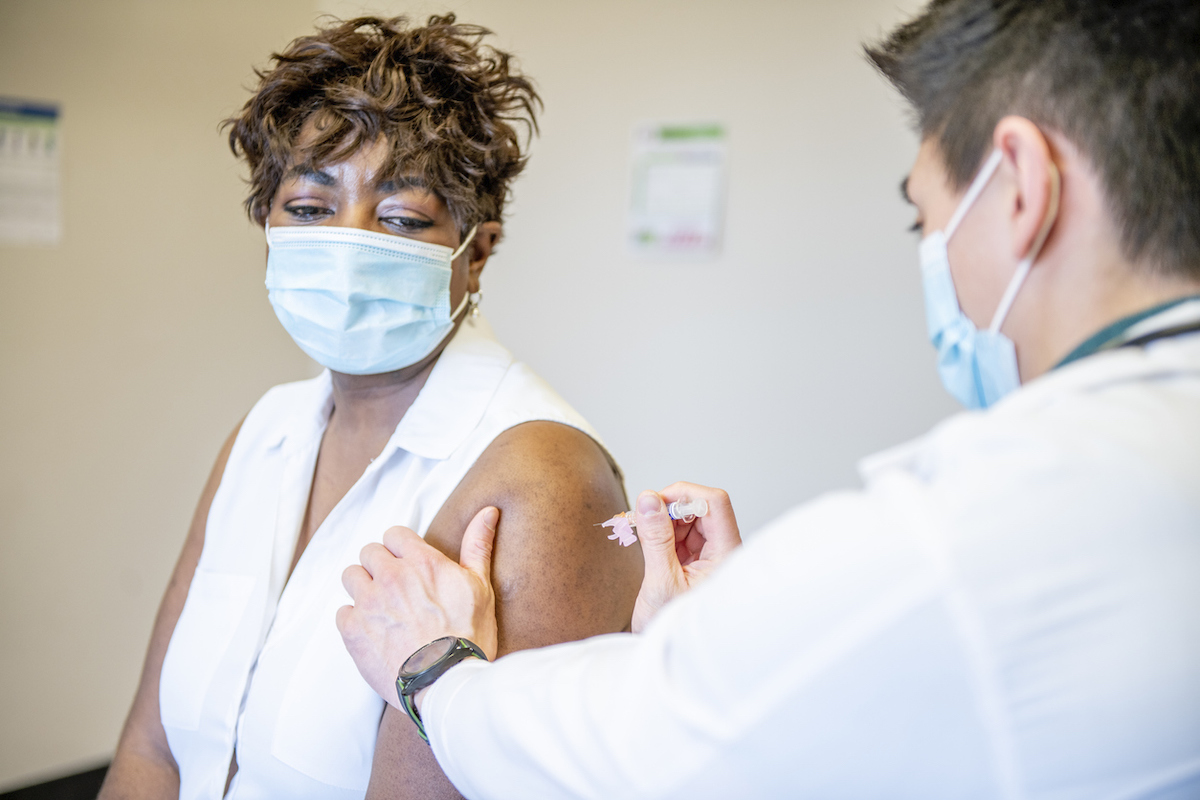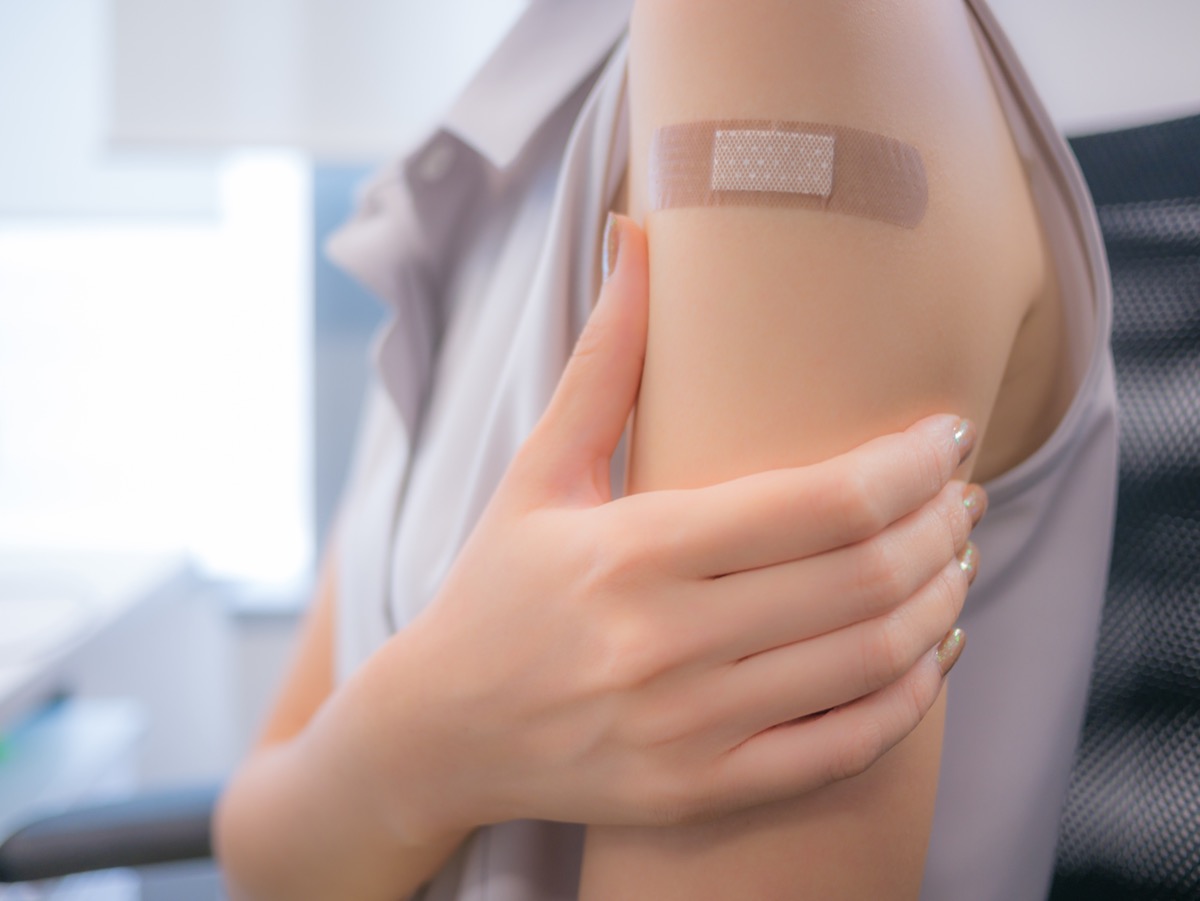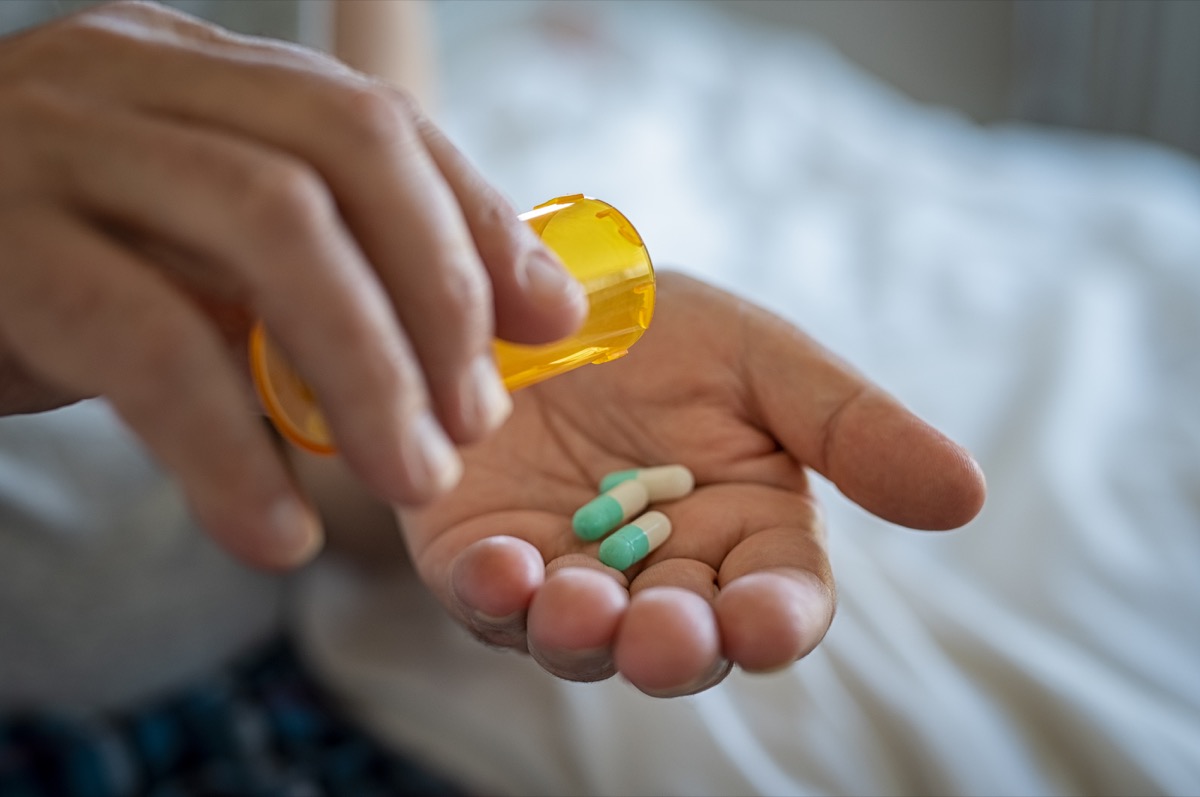While dermatological reactions can occur with any shot—not just the COVID vaccine—researchers at Massachusetts General Hospital (MGH) have noticed a delayed COVID vaccine side effect on the skin of some individuals who’ve received the Moderna vaccine. In a letter to The New England Journal of Medicine (NEJM), physicians noted that the reaction can present on the vaccinated arm as a red, itchy, painful, sometimes raised area, which, in some cases, covers a large area of skin. And for the latest COVID news delivered straight to your inbox, sign up for our daily newsletter. The authors of the NEJM letter explained that, among 12 individuals who developed delayed dermatological reactions to the Moderna vaccine, the symptoms manifested more than 72 hours after the shot was initially given—the period in which many experts, including Anthony Fauci, MD, chief COVID adviser to President Joe Biden, has said reactions were most likely to occur. Instead, those with the delayed side effect after the Moderna vaccine experienced the reaction between four and 11 days after the administration of their vaccine dose. In most patients, the reaction cleared up after approximately a week. And if you’re about to get your shot, know that The Pfizer Vaccine May Be Less Effective If You Have This Common Condition. Though the delayed onset skin irritation associated with the Moderna vaccine may be uncomfortable, that shouldn’t prevent you from receiving your second dose. If you have the dermatological reaction, it may actually be a good sign in the long run. Esther Freeman, MD, PhD, director of Global Health Dermatology at MGH and co-author of the NEJM letter, noted that the reaction was likely an indication that a person’s immune system had activated to fight the virus. “Overall, this data is reassuring and should not discourage people from getting the vaccine,” Freeman explained in a statement. And for more on what you shouldn’t do post-shot, check out Don’t Do This Until a Month After Your COVID Vaccine, Experts Warn. According to the NEJM authors, half of the individuals who developed a reaction after their first vaccine dose had a reaction after their second, as well. However, after the second dose, the reaction showed up faster—typically within 48 hours after receiving the vaccine. And while many have reported that their side effects, including fatigue and fever, were worse after receiving the second COVID shot, the delayed onset skin reaction was not more pronounced after the second dose of the vaccine. And for more on your second dose, check out Doctors Are Warning You to “Be Prepared” for This After Your Second Dose.ae0fcc31ae342fd3a1346ebb1f342fcb While the skin reaction documented in some individuals who’ve received the Moderna vaccine may look similar to an infection, it shouldn’t be treated the same way. “Delayed cutaneous hypersensitivity could be confused—by clinicians and patients alike—with a skin infection,” Erica Shenoy, MD, PhD, associate chief of the MGH Infection Control Unit, who co-authored the NEJM letter, said in a statement. “These types of reactions, however, are not infectious and thus should not be treated with antibiotics.” The majority of patients who experienced the reaction treated it with antihistamines, ice, or corticosteroid medication. And for the latest guidance on the pandemic, The CDC Is About to Announce This Major COVID Guideline Change.
